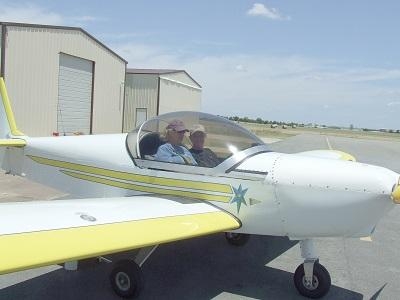Fri, Dec 19, 2014
Many Aircraft That Are Ideal For Light Sport Operation Carry An Experimental Airworthiness Certificate; But What Does That Mean?
The most common experimental airworthiness certificate is the one that is issued to homebuilt aircraft or experimental light sport airplanes. However, this is not the only type of experimental certification, and it’s important to read the fine print on the airworthiness certificate and to review operating limitations for the aircraft before considering ownership.

The FAA issues two types of airworthiness certificates: a standard certificate and a special certificate. The standard certificate is issued to an aircraft that is built in accordance with FAA regulations. Under today’s regulations, these would be FAR 23 or FAR 25. However, there many airplanes out there holding airworthiness certificates from other FAA standards issued in days gone by that are still valid.
An experimental airplane carries a special airworthiness certificate. The special airworthiness certificate is issued for aircraft that have not shown compliance with FAA design, testing, and manufacturing standards. An example of these would be an experimental-amateur built aircraft and a special-light sport airplane. However, not all aircraft with an experimental airworthiness certificate are the same.
Experimental airworthiness certificates actually come in 9 subdivisions referred to as “purpose.” Each one of these purpose subdivisions will carry its own operating limitations, some of which can be extremely limiting resulting in the airplane not being practical for recreational flying. These experimental purpose subdivisions are:
- Research and development
- Showing compliance with regulations
- Crew training
- Exhibition
- Air racing
- Market surveys
- Operating amateur-built
- Operating primary category kit-built aircraft
- Operating light-sport aircraft
An airplane issued a special airworthiness certificate is also issued operating limitations that are created by the FAA and are considered part of the airworthiness certificate itself. The operating limitations of the different experimental purpose categories are quite different from each other. Operating limitations issued with a special airworthiness certificate may carry numerous limitations that are not found in the regulations. These limitations and stipulations not only apply to the airplane, they also may apply to the pilot operating the aircraft.
If you are considering ownership of an airplane with an experimental airworthiness certificate, make sure you understand the purpose classification and carefully read the operating limitations.
(Image of experimental Zodiac 601 XL-B from file)
More News
He Attempted To Restart The Engine Three Times. On The Third Restart Attempt, He Noticed That Flames Were Coming Out From The Right Wing Near The Fuel Cap Analysis: The pilot repor>[...]
Make Sure You NEVER Miss A New Story From Aero-News Network Do you ever feel like you never see posts from a certain person or page on Facebook or Instagram? Here’s how you c>[...]
From 2009 (YouTube Edition): Leading Air Show Performers Give Their Best Advice for Newcomers On December 6th through December 9th, the Paris Las Vegas Hotel hosted over 1,500 air >[...]
Aero Linx: NASA ASRS ASRS captures confidential reports, analyzes the resulting aviation safety data, and disseminates vital information to the aviation community. The ASRS is an i>[...]
“For our inaugural Pylon Racing Seminar in Roswell, we were thrilled to certify 60 pilots across our six closed-course pylon race classes. Not only did this year’s PRS >[...]
 NTSB Final Report: Rutan Long-EZ
NTSB Final Report: Rutan Long-EZ ANN FAQ: Turn On Post Notifications
ANN FAQ: Turn On Post Notifications Classic Aero-TV: ICAS Perspectives - Advice for New Air Show Performers
Classic Aero-TV: ICAS Perspectives - Advice for New Air Show Performers ANN's Daily Aero-Linx (06.28.25)
ANN's Daily Aero-Linx (06.28.25) Aero-News: Quote of the Day (06.28.25)
Aero-News: Quote of the Day (06.28.25)



